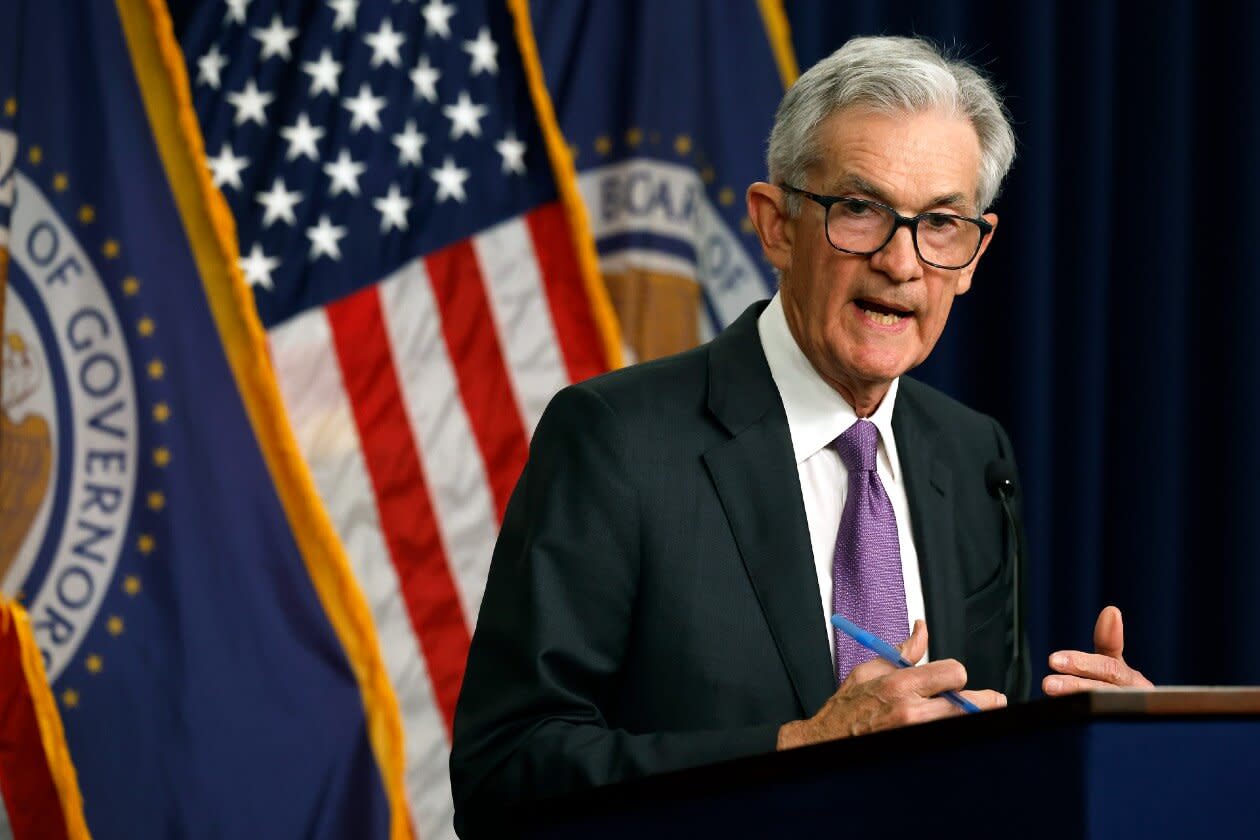After more than two years of interest rate hikes and concerns about inflation, the world’s largest central banks are turning a corner.
Annual inflation rates have been falling sharply and interest rate cuts could be coming in a few months. This year markets are expecting a major change in policy from the Bank of England (BoE), the Federal Reserve (Fed) and the European Central Bank (ECB), among others, and this shift is reverberating through financial markets.
How are interest rate expectations shifting?
The Bank of England meeting in March was notable, not because they changed the base interest rate, but because the two members did not vote for a rate hike.
The March vote split at the Monetary Policy Committee was 8-1, in favor of remaining on hold. Previously there had been a three-way split, with two members, Catherine Mann and Jonathan Haskel, voting for a rate hike.
Mann and Haskel switched to voting for rates to remain on hold at the March meeting. This dovish shift in the rate split was considered a big stride to cutting interest rates later this year.
In fairness, the BoE’s meeting was merely the latest in a line of central banks that are moving closer to declaring victory over the war on inflation and towards cutting interest rates.
In recent weeks, the president of the ECB has said they could cut rates in the summer. The Fed said that their twin goals of meeting a 2% inflation target and providing full employment are moving into better balance.
However, the Swiss National Bank was the first off the start line and surprised the market with a 25-basis points rate cut on 21 March.
In the past few months, markets have been caught off guard with trying to anticipate when central bankers will cut rates.
In 2023, financial markets had expected the Fed and the ECB to cut rates up to seven times this year.
Expectations have now been scaled back. The market instead now expects at least three cuts – 3.5 cuts from the ECB and 3 cuts from the Fed this year, in line with the Fed’s own dot plot – a visual depiction of the Federal Open Market Committee (FOMC’s) expectations for rate cuts.
Central bank outlooks are also changing
It's not only market expectations that have shifted in recent months. The turnaround in the economic cycle towards disinflation, and concerns around growth and some sectors in the economy, for example real estate, means that the outlook for the major central banks has also evolved.
Annual headline CPI rates for the UK, US and the Eurozone
There are a few outliers though.
The Bank of Japan raised interest rates and ended their negative rate policy in March, and the Turkish central bank also raised interest rates sharply.
However, both of these countries have singularities that means their monetary policy paths have long diverged from the Fed, BoE and the ECB.
Why are the major central banks moving together?
The Fed, BoE and ECB have mostly been moving together. Even the BoE noted the correlated movements between market expectations for UK and US policy rate paths in the minutes of their March meeting.
Despite differences in the UK and the US’s gross domestic product (GDP) rates, the convergence could be attributed to ‘factors such as the similarities in current policy rates and the two economies being in broadly similar stages of the disinflationary process.’
This tells us two things.
First, what the Fed does could impact what happens at the BoE, since their policy paths have converged.
Second, the UK’s no longer a global outlier when it comes to inflation. That’s thanks to the recent progress made on bringing inflation down from exceptionally high levels.
How have the central bank doves impacted stock markets?
The dovish shift from the world’s major central banks has had a big impact on financial markets.
US blue-chip stock markets made record highs. Even the FTSE 100, which has lagged its global peers so far this year, reached a record high. Of course, this isn’t necessarily set to continue, past performance isn’t a guide to the future.
Global bond markets have also surged, and yields have fallen (bond yields move in the opposite direction to price).
In six months, the US 2-year Treasury yield has fallen nearly 60 basis points. The 2-year Gilt yield has had a sharper fall and is lower by more than 80 basis points. Remember, yields are variable, and no income is ever guaranteed.
Commodities have also risen sharply in recent weeks.
As you can see, a wave of ‘dovish’ commentary from the Fed, the ECB and the BoE has sparked an ‘everything’ rally. But how long can this last?
This article isn’t personal advice. All investments can rise and fall in value, so you could get back less than you invest. If you’re not sure whether an investment is right for you, ask for financial advice.
Where next for stock markets?
The markets are well known for their animal spirit and getting ahead of themselves, especially when it comes to expectations for interest rate cuts.
It’s worth noting that central banks remain data dependent. For example, the BoE said in their March statement that ‘monetary policy will need to remain restrictive for sufficiently long to return inflation to the 2% target.’
Added to this, the Fed also said in March that the committee will ‘continue to monitor the implications of incoming information for the economic outlook’ before adjusting their policy rate. This means that the economic data continues to matter.
If we see more upside surprises to inflation, continued gains in jobs data and wage data then central banks might need to be cautious when it comes to the timing of rate cuts.
Markets could also be vulnerable to the longer-term outlook for interest rates.
The ECB President Christine Lagarde said that even after the first rate cut from the ECB, it can’t pre-commit to a particular rate path.
The BoE said in the minutes of its March meeting that the stance of monetary policy could remain restrictive even if bank rate was reduced, given that it was starting from an already restrictive level.
The Fed’s March dot plot also revised up their interest rate projections for 2025, 2026. The FOMC’s long-term expectation for interest rates was also revised higher to 2.6% from 2.5%.
All of this means that the path for lower interest rates might not move in a straight line.
Gold glitters as central banks turn dovish
The gold price reached a record high on 20 March 2023, rising by nearly $200 an ounce in the last month.
The reasons for the sharp increase were puzzling, and there was no single driver. However, gold is the world’s oldest ‘inflation hedge’. So, some of the demand for gold could be driven by concerns that inflation risks remain, and central banks could cut rates too quickly.
According to the World Gold Council, central bank buying has driven gold demand in recent months, however, there have been $5.7bn of outflows from the gold ETFs so far in 2024.
There’s a concern that some money could be leaving gold to take advantage of the rally in stocks, but some investors are sticking to gold in case inflation rises down the line.
While annual rates of inflation are falling, recent monthly price rates have risen sharply.
For example, there were large monthly increases in German prices in February. The Fed’s preferred inflation measure, the core PCE, also saw a large monthly increase at the start of the year. And the headline consumer price index (CPI) rate in the UK rose by 0.6% between January and February.
Maybe gold traders are on to something?
No one knows what’s next for gold, inflation, interest rates or bonds and shares. So, if anything, this just serves as a reminder to stick to the golden rule of investing – diversify and let time do the work.
Kathleen Brooks is the Founder of Minerva Analysis, a market analysis company. Hargreaves Lansdown may not share the views of the author.
Looking to use your ISA allowance before the 5 April deadline this tax year and aren't sure where to invest? See our latest investment trust ideas, picked out by our expert investment analysts.
Article image credit: Getty images / Chip Somodevilla.


